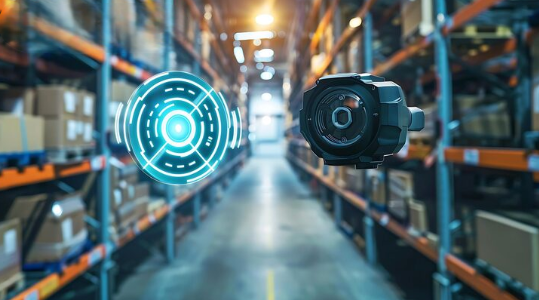
The modern warehouse is the heartbeat of global supply chains, yet it faces growing threats—from internal theft and operational inefficiencies to safety breaches and asset damage. Smart surveillance systems, driven by artificial intelligence and IoT technologies, have emerged as the ultimate line of defense and optimization in warehouse management. By integrating intelligent cameras, automated alerts, and analytical tools, warehouses can significantly reduce loss while enhancing overall safety and productivity.
How AI Surveillance Is Revolutionizing Warehouse Security?
Artificial intelligence is transforming traditional surveillance by giving cameras the power to think, learn, and act. Unlike legacy systems that require manual review and response, AI-powered surveillance solutions autonomously identify irregular behaviors and potential security threats in real time. These systems analyze movement patterns, recognize faces, detect unauthorized access, and issue instant alerts—all without human intervention.
In environments as dynamic and expansive as warehouses, this level of automation is critical. Smart surveillance doesn’t just record—it interprets. The system can flag an open bay door after hours, detect loitering in restricted zones, or notice an employee deviating from authorized pathways. Moreover, integrated heat maps and activity logs provide a visual representation of foot traffic, helping warehouse managers pinpoint workflow bottlenecks or understaffed areas.
1. 24/7 Monitoring and Remote Access Control
Continuous monitoring is a non-negotiable requirement for large warehouse facilities. Smart surveillance offers 24/7 visibility without fatigue or error, with night vision cameras, infrared sensors, and thermal imaging enhancing accuracy in low-light conditions. This level of surveillance ensures that even during off-hours or holidays, critical assets remain protected.
Remote access capabilities have become equally essential. Warehouse managers can now monitor live feeds and receive notifications via smartphones, tablets, or centralized dashboards. These cloud-connected systems offer full control over PTZ (pan-tilt-zoom) cameras, allowing users to zoom in on activity from anywhere in the world. In addition, AI-based video indexing makes it easy to retrieve and review specific incidents within seconds, dramatically reducing investigation time.
2. Seamless Integration with Access Control and Inventory Systems
Smart surveillance systems are most effective when integrated into a broader operational ecosystem. By syncing with RFID systems, biometric authentication, and digital access controls, warehouses create layered security frameworks that ensure only authorized personnel enter sensitive zones.
Additionally, real-time camera feeds linked to inventory management systems provide visual verification for:
- Picking and packing accuracy.
- Misplaced or mislabeled goods.
- Unauthorized product handling.
When discrepancies occur—such as inventory mismatches or tampering—visual proof supports immediate investigation and resolution, reducing shrinkage and improving accountability.
3. Minimizing Internal Theft and Inventory Shrinkage
Internal theft remains one of the most damaging and elusive risks within warehousing operations. Smart surveillance addresses this issue through intelligent behavior analysis, which detects suspicious patterns that may go unnoticed by human observers. Whether it’s extended dwell times in restricted areas, repeated access outside regular shifts, or inconsistencies between inventory logs and real-time camera footage, these indicators are flagged instantly.
Moreover, strategically placed high-definition cameras at entry and exit points, loading docks, and high-value zones create an environment of transparency and accountability. Employees are more likely to adhere to protocols when they know their actions are being observed by systems designed to detect deviations with precision.
4. Ensuring Workplace Safety and Regulatory Compliance
Safety is not merely a legal obligation; it’s a key performance factor in warehouse operations. Smart surveillance plays a pivotal role in enforcing safety protocols, such as the use of helmets, gloves, and reflective gear. AI systems can detect whether personal protective equipment (PPE) is being worn and raise alerts if not.
In case of accidents, recorded footage aids in incident investigation, liability determination, and training. Compliance with regulatory bodies such as OSHA (Occupational Safety and Health Administration) can be better managed by archiving surveillance data to demonstrate adherence to workplace safety mandates. Over time, these insights allow warehouse operators to implement proactive measures to prevent recurrence of accidents or violations.
5. Scalable, Modular, and Cost-Effective Security Infrastructure
Smart surveillance systems are designed to grow with your warehouse. As operations scale, new zones, racks, and processes emerge that need coverage. The modular architecture of modern surveillance tools allows for seamless expansion—adding more cameras, sensors, or access points without disrupting existing operations.
Compared to guard-based security, the return on investment is significant:
- Reduced overhead from 24/7 automated surveillance.
- Lower insurance premiums due to enhanced safety protocols.
- Fewer losses from theft, damages, or order fulfillment errors.
Warehouses benefit not only from increased protection but from smarter, leaner operations.
6. Cybersecurity and Data Integrity in Surveillance Systems
With digital surveillance comes the responsibility of safeguarding data. Modern smart surveillance platforms are built with cybersecurity at their core, using end-to-end encryption, multi-factor authentication, and role-based access control to prevent unauthorized usage. Encrypted video feeds and cloud backups ensure that sensitive footage cannot be tampered with or accessed by malicious actors.
Regular system updates and vulnerability scanning help maintain the integrity of the surveillance network. Data logs are protected in compliance with international standards such as GDPR and ISO/IEC 27001, offering peace of mind to logistics companies operating in multiple jurisdictions.
Conclusion: Proactive Protection for the Modern Warehouse
The evolution of smart surveillance has reshaped how we approach warehouse security and efficiency. These systems do more than protect against theft—they streamline operations, ensure compliance, and enhance productivity through intelligent automation. In a world where every second and every shipment counts, investing in surveillance services is not just a security measure—it’s a strategic decision.
By harnessing the power of AI, IoT, and cloud technologies, warehouses can confidently navigate the complexities of modern supply chains while safeguarding their people, property, and profits.
